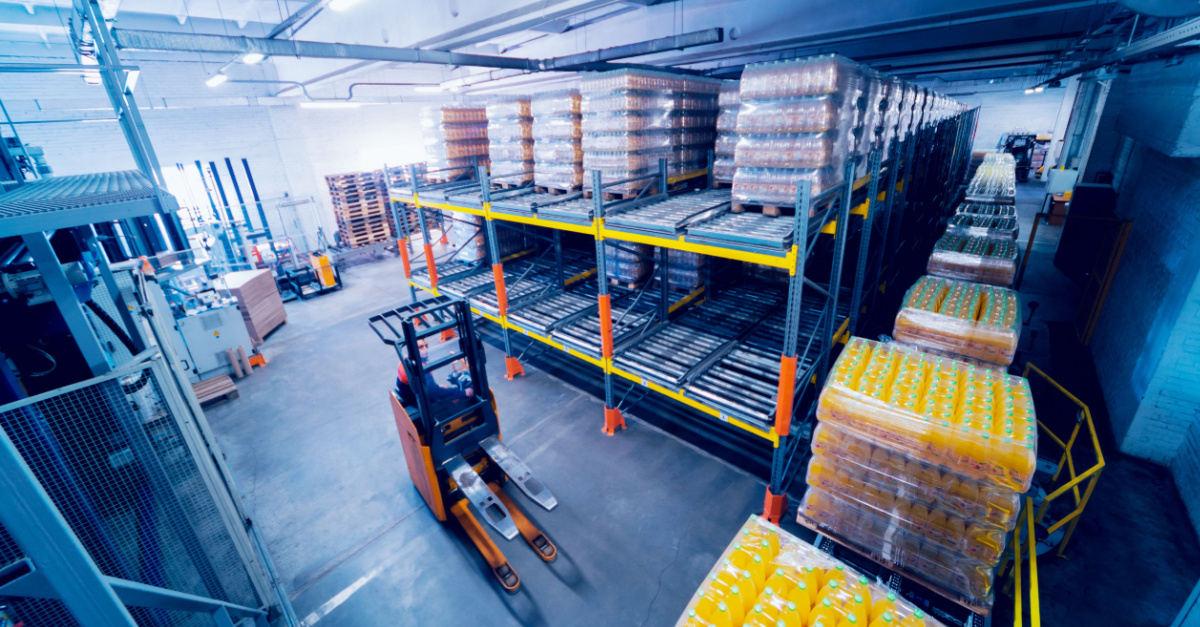
In the world of beverage logistics, the challenges are as diverse as the drinks themselves. The industry grapples with the intricacies of perishability, complex regulations, fragile packaging, ever-shifting demand, and the seasonal ebb and flow of consumer preferences. It’s a landscape where the stakes are high and the margins are thin. In fact, according to a report, the market size of the global food and beverages market is expected to grow from $6729.54 Bn in 2022 to $9225.37 Bn in 2027 at a CAGR of 6.3%.
To navigate this complex terrain successfully, one needs more than just the right logistics partner; one needs a strategic ally who understands the unique demands of beverage logistics. This article delves into the core of beverage logistics, emphasizing the criticality of cost reduction and efficiency enhancement. We’ll explore how optimizing your shipping operations through a tech-enabled freight broker communication and transparency solution can be the game-changer you need. This solution not only ensures cost-effectiveness but also timely and sustainable transportation for your valuable cargo.
We present three indispensable strategies to transform your beverage logistics operations: optimized routing, collaborative logistics, and efficient inventory management. These strategies are not just about saving costs; they are about maximizing efficiency and performance, tailored to meet the unique demands of the beverage logistics industry.
For shippers, BCOs, and freight forwarders seeking to streamline their operations and enhance their bottom line, tech-enabled collaboration is the future of beverage logistics. Whether you’re shipping soda, spirits, or sparkling water, these strategies will help you quench your thirst for cost-effective, on-time, and sustainable transportation solutions. Let’s dive in and discover how to conquer the challenges of beverage logistics with technology, innovation, and smart strategies.
Let’s look at three strategies focusing on route optimization, collaborative logistics, and efficient inventory management that will help maximize your beverage logistics efforts.
Efficient routing is the cornerstone of cost-effective and efficient beverage logistics. Optimized routing can make all the difference in a dynamic industry where every minute and every mile counts. Let’s look deeper into optimized routing and its role in cost reduction and efficiency improvement in the beverage logistics landscape.
Optimized routing is more than just choosing the shortest path from point A to point B. It’s a data-driven approach that takes into account a myriad of variables, such as traffic conditions, delivery windows, vehicle capacity, and even the specific needs of the cargo being transported. This strategic approach aims to minimize distance and time while ensuring each delivery is made efficiently.
In the digital age, the possibilities for optimized routing have expanded exponentially. Advanced routing technologies use real-time data, including traffic information, weather conditions, and even customer data, to fine-tune routing decisions. These technologies employ algorithms and AI to continuously adjust routes as conditions change. This adaptability is a game-changer in an industry where unexpected events can disrupt delivery plans.
In the complex world of beverage logistics, collaboration is not just a buzzword; it’s a necessity. The seamless flow of products from manufacturers to retailers involves a web of stakeholders, each with their own part to play. Collaborative logistics fosters stakeholder cooperation to minimize costs, enhance efficiency, and improve overall supply chain performance.
Successful collaborative initiatives in the beverage industry serve as inspiring examples of what can be achieved through cooperation:
Zengistics operates one of the world’s first collaborative logistics platforms, a smart way for shippers, carriers, and drivers to seamlessly work together to get things done faster, allowing shippers, carriers, and BCOs to avail of various benefits and savings mentioned here.
In the beverage industry, efficient inventory management is akin to a delicate dance between supply and demand. It’s the art of ensuring that products are available when and where needed, without excess stock tying up capital or the risk of running out of essential items. Let’s explore the significance of efficient inventory management in reducing carrying costs and improving cash flow.
Efficient inventory management is a crucial element in cost reduction for the beverage logistics sector. When done right, it helps in several ways:
To achieve cost-efficiency in inventory management, businesses can employ various strategies:
Efficient inventory management is a balancing act, but it’s one that pays off in terms of cost savings, improved cash flow, and a more responsive supply chain.
In the world of beverage logistics, where perishability, complex regulations, and fluctuating demand are everyday challenges, it’s imperative to focus on cost reduction and efficiency enhancement. By adopting these strategies and leveraging technology, the beverage industry can achieve the twin goals of low costs and high performance. These approaches promise both cost-effectiveness and heightened performance, addressing the unique demands of the beverage logistics landscape.
The beverage industry’s logistics challenges demand innovative solutions. Optimized routing, collaborative logistics, and efficient inventory management are the keys to cost reduction and improved efficiency. For shippers, BCOs, and freight forwarders in the beverage industry, these strategies are your keys to success.
They can help you navigate the intricacies of beverage logistics, minimize costs, and ensure timely and sustainable transportation. In a world with slim margins, these strategies are your path to thriving in a demanding and dynamic industry. With Zengistics, you have a partner offering data-driven solutions, proactive communication, and personalized supply chain optimization.
Ready to transform your beverage logistics? Get a Freight Quote today and take the first step towards low costs, high performance, and a competitive edge in the industry.